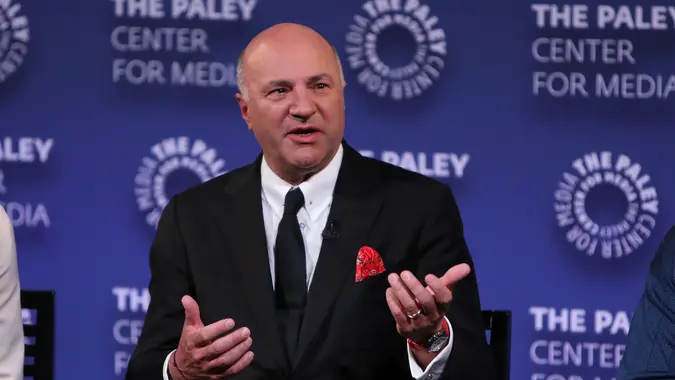Retirement Strategies To Consider Once Your Portfolio Hits $1 Million

Commitment to Our Readers
GOBankingRates' editorial team is committed to bringing you unbiased reviews and information. We use data-driven methodologies to evaluate financial products and services - our reviews and ratings are not influenced by advertisers. You can read more about our editorial guidelines and our products and services review methodology.

20 Years
Helping You Live Richer

Reviewed
by Experts

Trusted by
Millions of Readers
If you’ve reached the lofty sum of $1 million in your retirement accounts, congratulations! This is a dream that many Americans never reach. According to CNBC, the average 401(k) balance for Americans age 65 and older is just $255,151, and the median, which is a more telling figure, is just $82,297.
By those standards, $1 million seems like more than enough to fund the average retirement. But even with that figure, some potential road mines may lie ahead if you don’t have a plan. Here are some steps to take, and some things to consider, if you have a retirement portfolio that reaches $1 million.
Dial Down Your Risk
Once you’ve reached $1 million or more in your retirement account, you can likely ease back the throttle on the “accumulation” phase of your savings plan. Although you’ll still want to earn the best return you can, you don’t want to lose what you have already worked hard to accumulate.
In the minds of many Americans, $1 million is that mythical number they shoot for as a lifelong goal in their retirement accounts. Although it may not cover every expense you have throughout your entire retirement, it’s a hefty sum of money. Depending on your lifestyle, it may very well last for the rest of your days. At this point in the game, it can be a gamble to put that fortune at risk rather than preserving it with some less-aggressive investments.
Keep Your Equity Positions
Taming down the risk in your portfolio is not the same thing as giving up all hope of growth. No matter what your age, common wisdom among financial advisors has now shifted to the idea that equities play a role in nearly every portfolio.
Americans continue to live longer, and many retire before the Social Security definition of “full retirement age” of 67. As such, you’ll need some growth in your portfolio to help combat the effects of inflation. If you retire at age 60, you might very well live 30 or more years. If inflation averages just 3% per year, prices of everyday items will more than double through the course of your retirement.
Without some growth in your portfolio, you’ll likely be losing ground. This is particularly true if inflation stays anywhere near the 6.5% the U.S. economy posted in 2022.
Do the Math
While $1 million is often tossed about as a target value for a retirement account, it’s really an artificial construction. For some Americans, it won’t be nearly enough to fund a long retirement, while for others, it will amount to the proverbial “pot of gold.” Only you know your financial situation well enough to know what that figure means for your retirement.
If it looks like that’s where you’re headed, sit down with your financial advisor, tax specialist and/or an online calculator to determine how long that amount might last you in retirement. Be sure to factor in things like taxes, increased medical expenses and changes in lifestyle. Some retirees, for example, spend much less in retirement, but others see it as their time to travel the world and live extravagantly. Defining the path you want to take is critical in determining how much money you’ll really need to enjoy your retirement.
Set Your Withdrawal Budget
Most Americans aren’t familiar with handling large sums of money. If you end up with $1 million or more in your retirement account, viewing it as a lump sum could lead you to make some poor financial decisions. An important step to take when you reach this level is to set a retirement withdrawal budget.
With a budget, you will see in black and white how much money you really need to support your lifestyle and can take withdrawals accordingly. Without a budget, you might end up draining your account much faster than you intend. This could lead to serious financial ramifications, as you may have to reduce your standard of living in your final days simply to avoid running out of money.
Planning is essential to ensure you enjoy your retirement money responsibly and don’t accidentally blow through it all in a few short years.
Make Sure It Is Really Enough
No matter how much you earn during your working career, you certainly deserve some credit for successful financial management if you’ve got $1 million in your retirement portfolio. However, the reality is that for many Americans, $1 million isn’t enough to completely fund retirement.
Think of it this way — if you have a 30-year retirement and you simply live off that $1 million, that’s just $33,333 per year. When you factor in taxes and inflation, by the end of your retirement, that really won’t be much of an income.
Of course, there are additional factors that can indeed make that sum last a lifetime, including successful investing while in retirement, careful planning and budgeting, and the supplementary income you’ll likely receive from Social Security. But again, you’ll have to do the math and analysis to determine if $1 million is really enough for you.
 Written by
Written by  Edited by
Edited by 
























